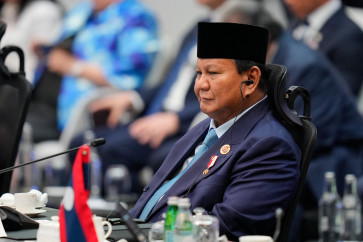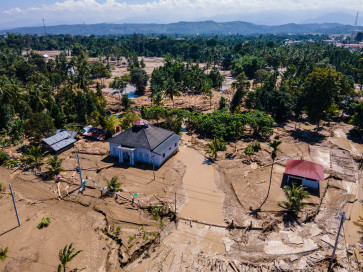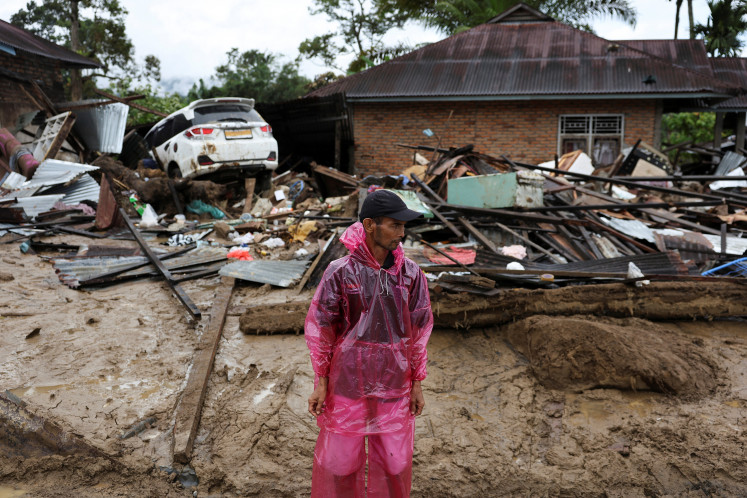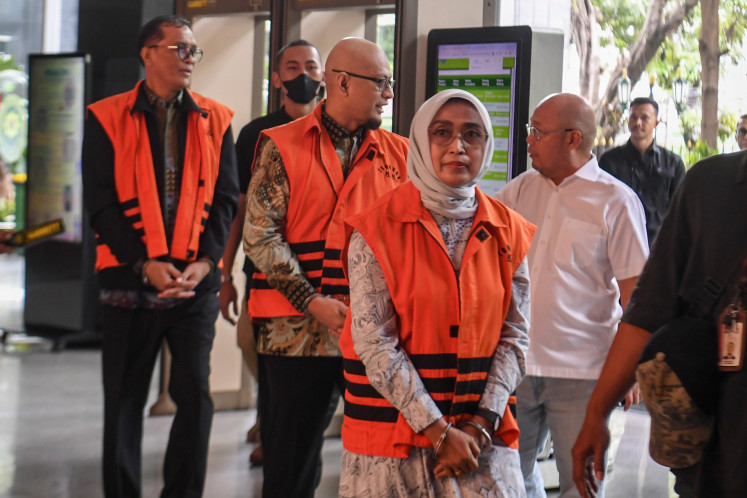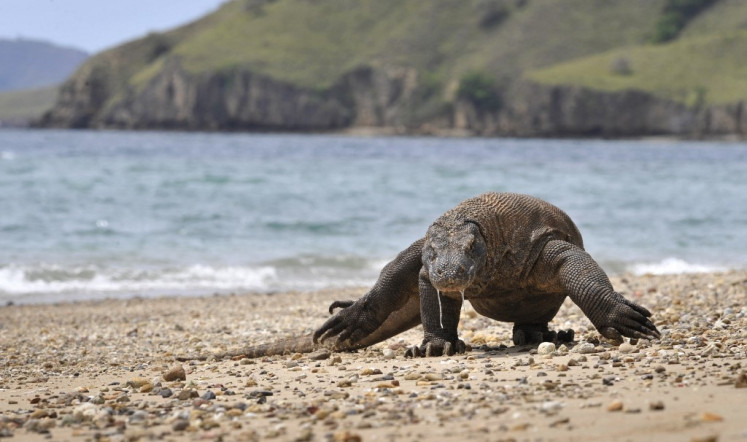Popular Reads
Top Results
Can't find what you're looking for?
View all search resultsPopular Reads
Top Results
Can't find what you're looking for?
View all search resultsFossils of prehistoric elephant, leaf found in Blora
A fossil team from the Bandung Geological Museum and the Energy and Mineral Resources Ministry's Center for Geological Surveys has found the complete fossils of a prehistoric elephant and a prehistoric leaf in Blora, Central Java, a local official said Wednesday
Change text size
Gift Premium Articles
to Anyone
A
fossil team from the Bandung Geological Museum and the Energy and Mineral Resources Ministry's Center for Geological Surveys has found the complete fossils of a prehistoric elephant and a prehistoric leaf in Blora, Central Java, a local official said Wednesday.
Blora Tourism and Culture Agency cultural division head Suntoyo said the findings were made in February at a former sand quarry in Sunggun village, Medalem subdistrict, Kradenan district.
"It's some 2 kilometers from the site where the fossil of a prehistoric elephant tusk was found in early January," he said.
The elephant fossil, of the species Elephas hysundrindicus, was found buried in 4 meters of dirt. It measured an estimated 2.5 meters tall, with back leg bones of 1.7 meters long.
"There have indeed been numerous findings of prehistoric animal fossils in Blora," Suntoyo said.
"We know it at least from the findings made by researcher G.H.R. von Koenigswald in 1932, during the Dutch colonial period."
He was referring to the Dutch archeologist renowned for his eagerness in studying the Sangiran archeological site in Sragen, also in Central Java.
It was von Koenigswald who pioneered the establishment of Sangiran Museum. Together with his team, he found numerous fossils of prehistoric man, animals and tools.
The fossil team, who were initially thought to be illegal excavators, also estimated that Blora in the Pleistocene epoch, about 1.8 million to 11,500 years ago, was a savanna through which the prehistoric Bengawan Solo River passed.
The estimate was made based on the finding of the prehistoric leaf, printed on a silt stone formed by the sedimentation of sand and clay, Suntoyo said.
He added Blora residents frequently found various fossils in the are.
They usually report them to the authorities, so the local culture agency can report the findings to the archeological conservation agency in Prambanan, Yogyakarta, for further examination, he said.
Many of the findings are currently being housed at the conservation agency office, while some have been taken to Bandung by the geological museum's fossil team and others have been taken to Mahameru Museum in Blora.



